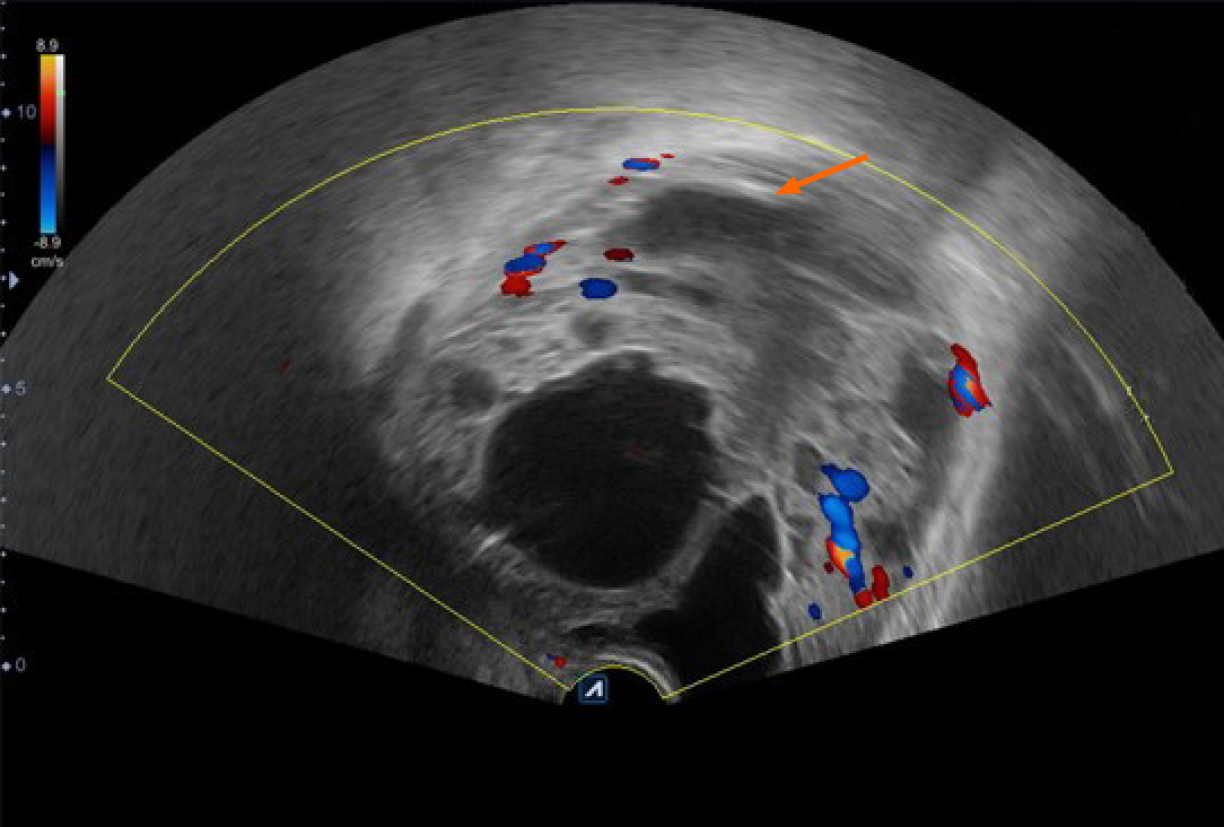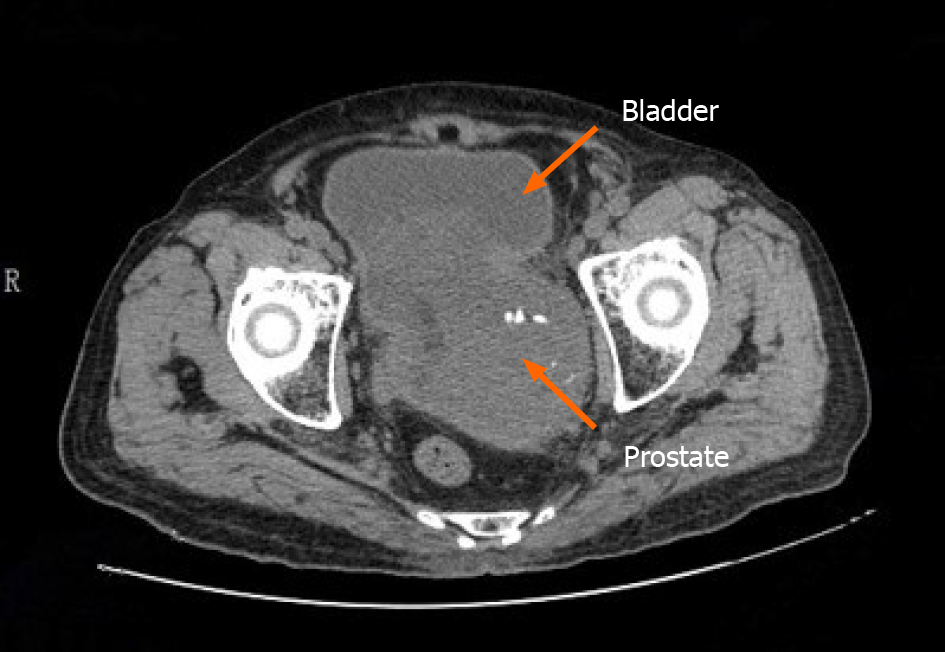Copyright
©The Author(s) 2021.
World J Clin Cases. Apr 26, 2021; 9(12): 2830-2837
Published online Apr 26, 2021. doi: 10.12998/wjcc.v9.i12.2830
Published online Apr 26, 2021. doi: 10.12998/wjcc.v9.i12.2830
Figure 1 Color-ultrasound of the urinary bladder area suggested an enlarged prostate of approximately 9.
29 cm × 10.98 cm × 9.62 cm in size protruding into the urinary bladder. Multiple cystic, hypoechoic lesions were detected in the prostate gland, and no evident signs of blood flow were seen in the hypoechoic lesions (arrowheads). Prostate hyperplasia with cystic degeneration was considered.
Figure 2 Magnetic resonance imaging revealed that the prostate was evidently enlarged with resultant compression and right-sided deviation of the urinary bladder and rectum (as indicated by arrowheads).
Irregular density shadows could be seen in the prostate gland. T2 weighted imaging showed nonhomogeneous and height signals internally. The peripheral zone of the prostate was unclear with bilateral seminal vesicles atrophied and no evidence of lymph node involvement in the pelvic cavity or tumor invasion to the surrounding structures.
Figure 3 Postoperative histological examination.
A: Postoperative histological examination revealed prostatic stromal tumor with considerable, diffused proliferation of heterotypic interstitial cells without any characteristic arrangement. Such tissues consisted of irregular vacuolated spindle cells with abundant eosinophilic cytoplasm and a hyperchromatic nucleus. In addition, the nucleus was slightly enlarged with a few visible nuclear grooves (arrowheads). Tumor cells exhibited mostly round-like and short spindle-like morphology with evident heterotypic and inconspicuous nucleoli. Signs of mitotic activity were relatively abundant and accounted for approximately 7/10 fields in selected active cell growth regions (hematoxylin and eosin stain, 400 × magnification). B: Immunohistochemistry revealed that the tumor cells were diffusely positive for CD34; C: The cells were focally positive for Ki-67 (immunohistochemical stain, 200 × magnification).
Figure 4 A follow-up pelvic computed tomography revealed that the prostate was enlarged in size with irregular morphology.
The prostate gland protruded locally to the bladder with uneven density. Patchy, low-density shadows and punctate calcification can also be seen in the prostate gland with an unclear boundary between the prostate and bilateral seminal vesicles gland.
- Citation: Zhao LW, Sun J, Wang YY, Hua RM, Tai SC, Wang K, Fan Y. Prostate stromal tumor with prostatic cysts after transurethral resection of the prostate: A case report. World J Clin Cases 2021; 9(12): 2830-2837
- URL: https://www.wjgnet.com/2307-8960/full/v9/i12/2830.htm
- DOI: https://dx.doi.org/10.12998/wjcc.v9.i12.2830












